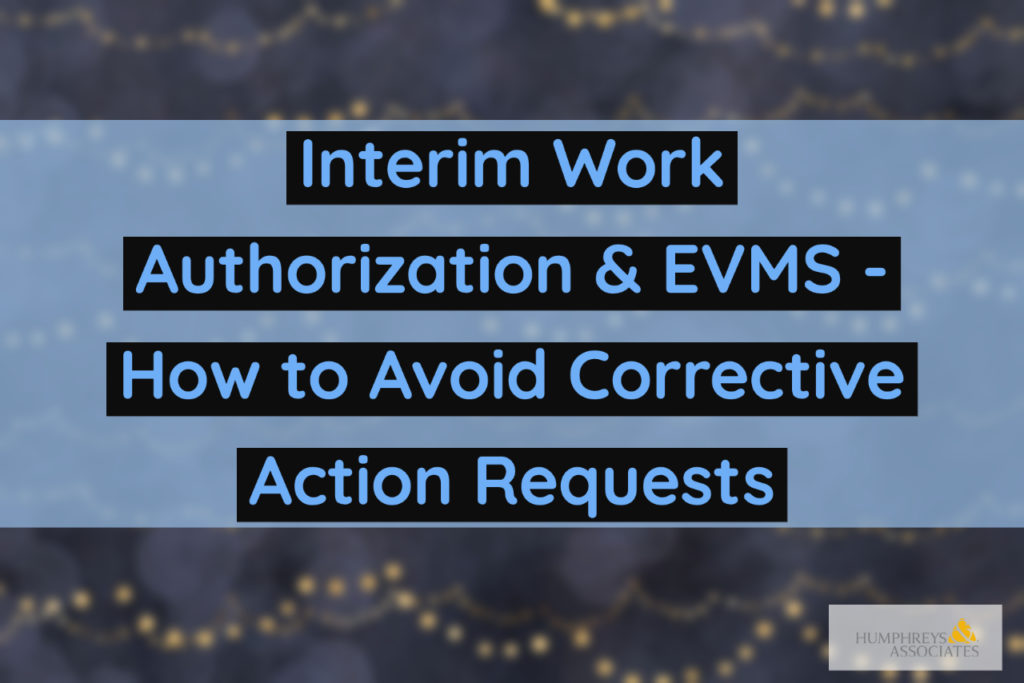
Recently, several contractors have been cited – Corrective Action Requests or CARs – for performing work without customer authorization, which should never be done. Every reputable EVM System (EVMS) Description says unauthorized work is not permitted.
How do Earned Value contractors get trapped into these situations?
In many cases, it is well-intentioned. The customer has an urgent requirement that must be started immediately, but they have not yet written the authorization to proceed (ATP). In an effort to be responsive to the customer’s needs, the contractor often starts the initial planning and even commences some of the work with the mutual understanding that a contract modification will be forthcoming.
Unfortunately, this is exactly when “Murphy” (that famous lawyer) shows up with a DCMA surveillance team who finds the major violation of the work authorization related guidelines in the EIA-748 Standards for Earned Value Management Systems.
How can EVM contractors not get trapped?
Of course, the perfect solution is to have the customer issue an immediate authorization for whatever work scope has popped up. This is not always a realistic expectation, especially with the number of changes some programs experience in any given week. Contractors end up doing planning and start-up work without appropriate (or any) external or internal authorization to do so.
Since it is not likely the customers will be able to correct their authorization processes in a timely manner, contractors should still implement an internal authorization process that will keep the onus of this situation off the control account managers (CAMs) shoulders.
Some contractors already have mechanisms in place to resolve these situations, but others do not. Most (if not all) contractors have a pretty well-defined work authorization process in place that covers the CAMs for all definitive changes, and even for routine authorized, unpriced work (AUW) situations. For some reason, though, some systems do not have the flexibility to create an “Interim Authorization Document” that would cover them for these unique situations.
An interim authorization allows the contractor to authorize their CAMs to do advance planning, and even to start initial work. This could be similar to estimating the value for AUW, whereby a Rough Order of Magnitude (ROM) for the initial or start-up effort could be used for a limited scope of work over a short period of performance (1 month, 3 months, 6 months, etc.) until the final work authorization would supersede the interim document. Of course, the program is still at risk of receiving a CAR for authorizing their CAMs to do work that is not yet authorized by the customer, but at least this can be handled by the two Program Offices, instead of appearing to be a CAM level issue.
So how can the Program Office get out of that box they are in of authorizing work to CAMs that the program has not been “authorized” to do yet?
A higher level of “Interim Authorization” would seem to be in order. Some contractors already have mechanisms in place to cover this situation. They simply do not allow work to start without some definitive and documented direction from the customer.
This can take many forms and depends on the company implementing it as well as the flexibility of their software package or existing forms. Some companies have simplified the process by implementing the requirement for something called an “AVO” (Avoid Verbal Orders), or some other term that accomplishes the same result.
The basic concept that works is that whenever the customer wants the contractor to take some action – with formal direction to come later – the contractor will commence the work as long as the two contracting offices “jot down” the basics of the agreement on the “AVO” form that both offices sign prior to going their separate ways. Using the “AVO”, the contractor now has the “official OK” to issue start-up budgets to CAMs to begin their initial efforts. With these authorizations in place, the CAR issue goes away.
We hope this article on how to avoid corrective action requests saves your company time, productivity, and money while keeping your EVMS on track for all projects.
Humphreys & Associates is available for consulting and information on this topic. Contact us for questions you have.